|
|
|
|
|
Oil On
Canvas, Real Flavor of Old Masters
|
|

|
ARTWORKS
INDEX
A B C D E F G H I J K L M N O P Q R S T U V W X Y Z |
ARTISTS
INDEX
A B C D E F G H I J K L M N O P Q R S T U V W X Y Z |
|
|
| | |
|
|
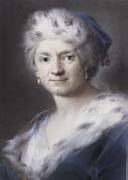 |
Rosalba carriera -- Click Here
|
|
Italian Rococo Era Painter, 1675-1757
Italian pastellist and painter. She was a daughter of Andrea Carriera, who worked in the mainland podesteria of the Republic of Venice, and of Alba Foresti, an embroiderer. She had two sisters: Angela, who married the painter Giovanni Antonio Pellegrini, and Giovanna, who, like Rosalba herself, never married. Pier Caterino Zeno (see Campori, 1886) and other, anonymous sources recorded that she was a pupil of Giuseppe Diamantini; according to Mariette, she originally painted snuff-boxes and later became a pupil of Federico Bencovich. There are more precise records of her life and of some of her works from 1700 onwards |
|
|
|
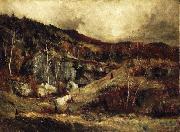 |
Robert Crannell Minor -- Click Here
|
|
(1839-1904), American artist, was born in New York City on 30 April 1839, and received his art training in Paris under Diaz, and in Antwerp under Joseph Van Luppen. His paintings are characteristic of the Barbizon school, and he was particularly happy in his sunset and twilight effects; but it was only within a few years of his death that he began to have a vogue among collectors. In 1897 he was elected a member of the National Academy of Design, New York. After 1900 he lived at Waterford, Connecticut, where he died on 4 August 1904. |
|
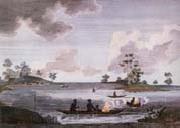 |
Robert Cleveley -- Click Here
|
|
British, 1747-1809,was an English maritime painter. His father and twin brother (John Cleveley the Elder, c.1712?C1777, and John Cleveley the Younger, 1747?C1786) were also artists, with John the Younger (and possibly Robert too, to judge from his style) gaining some training in watercolours from Paul Sandby, previously a teacher at the Royal Military Academy, Woolwich. John the Elder had tried and failed to make a living in working in a dockyard, and so did Robert, as a caulker. However, mocked by other dockyard workers for wearing gloves whilst working, John did not enjoy his time there, giving it up and in 1770 volunteering for the navy as a clerk. His first service as a clerk was briefly under Captain William Locker (who acted as patron to artists probably known to John the Elder), then soon afterwards under Captain George Vandeput on his voyage in the Asia to the West Indies and North America, during which time Vandeput became a lifelong friend. The Asia returned in 1777, and from then to the end of his life Robert followed a double career as purser on board various ships stationed in the Home Fleet (though most probably exercising his functions through a deputy for some or all of the time) and as a marine painter. This meant he could exhibit his works as "Robert Cleveley of the Royal Navy". First exhibiting at the Royal Academy in 1780, his specialism was naval battles (though he also produced pictures of royal naval occasions, such as his "View of the Fleet at Spithead Saluting George III at his Review in 1793", now at the National Maritime Museum) and many of his works were reproduced as engravings. Like his brother John, he also exploited their brother James' presence as a carpenter on Captain Cook's third voyage to gain access to art produced on the voyage and to produce art to cash in on the popular demand for South Sea images (eg a 1789 print of A view of Botany Bay). He did, however, still make occasional voyages with Vandeput, such as when he served as eassistant to the clerk of the kitchene in the royal entourage when the royal yacht Princess Augusta (under Vandeput) took Prince William Henry, later Duke of Clarence, to Hanover in July and August 1783. |
|
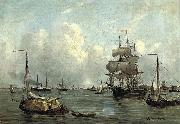 |
Robert Charles Laurens Gustave Mols -- Click Here
|
|
Belgium (1848- 1903 ) - Painter
painted Bustling activity in a Dutch harbour in |
|
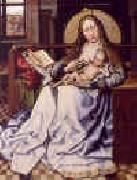 |
Robert Campin -- Click Here
|
|
1406-1444
Robert Campin Location
South Netherlandish painter. He is first mentioned in 1405-6 as a painter in Tournai. As he purchased citizenship there in 1410, he may have been born elsewhere. There is evidence of some connection with Valenciennes, where the name Campin is said to have been common, but nothing certain is known of his artistic training and background. |
|
|
|
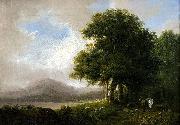 |
Richard Coubould -- Click Here
|
|
painted Info from source in author died 1831
|
|
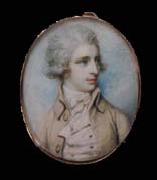 |
Richard Cosway -- Click Here
|
|
English Rococo Era Miniaturist, 1742-1821,Painter, draughtsman, dealer and collector. Probably the son of a schoolmaster, he showed a precocious talent for drawing and studied at Shipley's Drawing School in the Strand, where he won several prizes. He attended the Richmond House academy, set up by Charles Lennox, 3rd Duke of Richmond, where he met Giovanni Battista Cipriani. He first exhibited at the Society of Artists in 1760, showing there again between 1767 and 1779. He also showed at the Free Society of Artists between 1761 and 1766. In 1769 he entered the Royal Academy Schools, becoming an ARA in 1770, when he began to exhibit at the Academy, and RA the following year. In 1781 Cosway married the Anglo-Florentine artist Maria Cosway, n?e Hadfield, and they moved in 1784 to Schomberg House, Pall Mall, which became a centre for fashionable London society. In 1786 he made a brief visit to Paris and in 1791 he moved to a larger house in Stratford Place, London. |
|
|
|
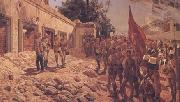 |
Richard Caton Woodville -- Click Here
|
|
1856 - 1927
was an English artist and illustrator, who is best known for being one of the most prolific and effective painters of battle scenes in the late nineteenth, and early twentieth centuries. The son of American Richard Caton Woodville (The First), who was also a talented artist, Woodville studied at the Dusseldorf School under the great Prussian military artist Wilhelm Camphausen, and then Eduard von Gebhardt, before briefly studying in Russia and then Paris under Gerome. Woodville spent most of his career working for the Illustrated London News where he quickly developed a reputation as a talented reporter and writer, but was also published in Cornhill Magazine, Strand Magazine, and The Tatler. Richard Caton Woodville first experienced battle first-hand when he was sent by the Illustrated London News to report upon the Russo-Turkish War (1877 C 1878), and then again in the 1882 Anglo-Egyptian War where he made numerous sketches, and also obtained photographs of the trenches at Tel-e-Kebir for his friend and co-artist Alphonse-Marie-Adolphe de Neuville whom had been commissioned to paint a scene of the battle. In 1879 Woodville's Before Leuthen, Dec 3rd, 1757 was exhibited in the Royal Academy. It proved popular, and afterwards he began to regularly be exhibited in Burlington House, where 21 of his battle paintings were eventually shown. His most popular works there were ones that dealt with contemporary wars, such as the Second Anglo-Afghan War, Candahar [sic], and Maiwand, Saving the Guns (Walker Art Gallery), the Zulu War, and the First Boer War. His works from Egypt were exhibited at the Fine Art Society in 1883, where his painting The Moonlight Charge at Kassassin proved very popular. The following year he exhibited by Royal Command another painting he had done of the war in Egypt, entitled The Guards at Tel-e-Kebir (Royal Collection). He continued to paint scenes of battle, and few battles or wars that Great Britain fought during his life were not touched upon by him, including the Second Boer War, and World War I. Despite his precocious talent for capturing the dramatic moments of contemporary battles, Woodville also enjoyed recreating historical scenes in both oil, and watercolour. The Illustrated London News commissioned him to complete a commemorative special series recreating the most famous British Battles of history. He depicted The Charge of the Light Brigade (Royal Collection, Madrid) and The Charge of the 21st Lancers at Omdurman (Walker Art Gallery), Battle of Blenheim, Battle of Badajos and several Battle of Waterloo pictures. During World War I, Woodville was compelled to return to the depiction of current events, and three of his Great War works were displayed in the Royal Academy. |
|
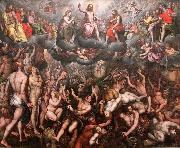 |
Raphael Coxie -- Click Here
|
|
painted The Last Judgment in 1588 |
|
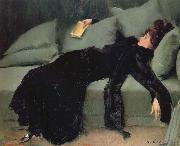 |
Ramon Casas i Carbo -- Click Here
|
|
1866-1932,was a Catalan artist. Living through a turbulent time in the history of his native Barcelona, he was known as a portraitist, sketching and painting the intellectual, economic, and political elite of Barcelona, Paris, Madrid, and beyond; he was also known for his paintings of crowd scenes ranging from the audience at a bullfight to the assembly for an execution to rioters in the Barcelona streets. |
|
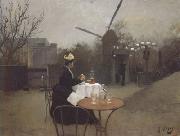 |
Ramon Casas -- Click Here
|
|
1866-1932
was a Catalan artist. Living through a turbulent time in the history of his native Barcelona, he was known as a portraitist, sketching and painting the intellectual, economic, and political elite of Barcelona, Paris, Madrid, and beyond; he was also known for his paintings of crowd scenes ranging from the audience at a bullfight to the assembly for an execution to rioters in the Barcelona streets. Also a graphic designer, his posters and postcards helped to define the Catalan art movement known as modernisme. Casas was born in Barcelona. His father had made a fortune in Matanzas, Cuba; his mother was from a well-off Catalan family. In 1877 he abandoned the regular course of schooling to study art in the studio of Joan Vicens. In 1881, still in his teens, he was a co-founder of the magazine L'Avenç; the 9 October 1881 issue included his sketch of the cloister of Sant Benet in Bages. That same month, accompanied by his cousin Miquel Carb i Carb, a medical student, he began his first stay in Paris, where he studied that winter at the Carolus Duran Academy and later at the Gervex Academy, and functioned as a Paris correspondent for L'Avenç. The next year he had a piece exhibited in Barcelona at the Sala Paris, and in 1883 in Paris the Salon des Champs Elysies exhibited his portrait of himself dressed as a flamenco dancer; the piece won him an invitation as a member of the salon of the Societe d'artistes françaises. The next few years he continued to paint and travel, spending most autumns and winters in Paris and the rest of the year in Spain, mostly in Barcelona but also in Madrid and Granada; his 1886 painting of the crowd at the Madrid bullfighting ring was to be the first of many highly detailed paintings of crowds. That year he survived tuberculosis, and convalesced for the winter in Barcelona. |
|
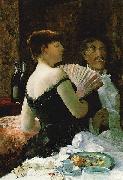 |
Ralph Curtis -- Click Here
|
|
(1854-1922 ) - Watercolours |
|
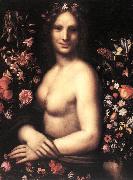 |
PROCACCINI, Carlo Antonio -- Click Here
|
|
Italian painter, Lombard school (b. 1555, Bologna, d. 1605, Milano) |
|
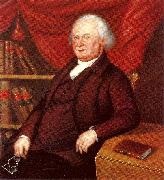 |
Polk, Charles Peale -- Click Here
|
|
American, 1767-1822
American painter. Orphaned as a child, he was raised in Philadelphia, PA, by his uncle, Charles Willson Peale, who taught him to paint. In 1791 Polk moved to Baltimore, MD, where he achieved limited success as a portrait painter. Seeking commissions, he moved to Frederick, MD, in 1796. Over the next five years during travels as an itinerant limner through western Maryland and Virginia he reached his mature style. Abandoning his academic training, Polk developed a distinctive but naive artistic vocabulary with a heightened palette, electric highlights and an exaggerated attenuation of the human form. The portraits of Isaac Hite and his wife Eleanor Madison Hite, as well as James Madison sr and Eleanor Conway Madison (all Middletown, VA, Belle Grove), were commissioned in 1799 and are accepted as his masterpieces. Isaac Hite also commissioned the quintessentially 'republican' portrait of Thomas Jefferson (New York, Victor Spark priv. col.), executed at Monticello in 1799. In 1801 Polk moved to Washington, DC, working as a clerk in the Treasury. During the next 16 years he painted few portraits in oil |
|
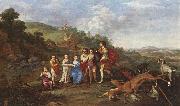 |
POELENBURGH, Cornelis van -- Click Here
|
|
Dutch Baroque Era Painter, ca.1586-1667 |
|
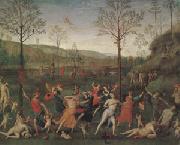 |
Pietro Vannuci called il Perugino -- Click Here
|
|
Citta della Pieve ca 1448-Fontignano 1523 |
|
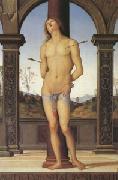 |
Pietro vannucci called IL perugino -- Click Here
|
|
Citta della Pieve ca 1448 -Fontignano 1523 |
|
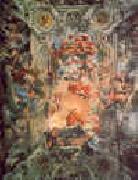 |
Pietro da Cortona -- Click Here
|
|
1596-1669 Italian Pietro da Cortona Galleries Italian painter, draughtsman and architect. He was, together with Gianlorenzo Bernini and Franceso Borromini, one of the three leading artists of the Roman Baroque. As a painter he developed the early Baroque style, initiated by Annibale Carracci, to a magnificent and imposing High Baroque. His fresco decorations set a standard for European Baroque painting until they were eclipsed by Giambattista Tiepolo's works and those of other Venetian masters of the 18th century. As an architect Cortona was far less influential. His imaginative designs for fa?ades and stucco decorations were, however, conclusive and independent solutions to problems central to Roman Baroque architecture.
|
|
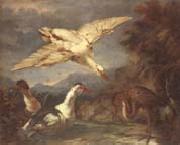 |
Pietro Cignaroli -- Click Here
|
|
Italian , Verona 1665-1720
|
|
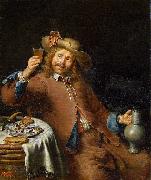 |
Pieter Cornelisz. van Slingelandt -- Click Here
|
|
(20 October 1640 - 7 November 1691) was a Dutch Golden Age painter.
According to Houbraken, his teacher was Gerard Dou, who he imitated so well that many of his works were later misattributed to him. According to Houbraken he was rather introverted and very methodical and conscientious, spending months on his works and striving for perfection. Houbraken especially liked a piece where a maid holds a mouse by the tail as a cat jumps for it.
Houbraken wrote that while Slingelandt was working on a family portrait for the gentleman Francois Meerman (1630-1672), |
|
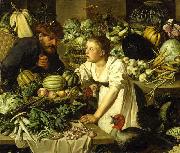 |
Pieter Cornelisz. van Rijck -- Click Here
|
|
painted Still Life with Two Figures, Dimensions in 1622
|
|
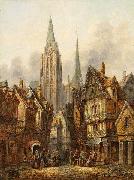 |
Pieter Cornelis Dommersen -- Click Here
|
|
painted A gothic cathedral in a medieval city in 19th century
|
|
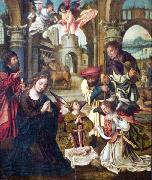 |
Pieter Coecke van Aelst -- Click Here
|
|
(August 14, 1502 - December 6, 1550) was a Flemish painter. He studied under Bernaert van Orley and later lived in Italy before entering the Antwerp Guild of painters in 1527. In 1533, he travelled to Constantinople for one year in a failed attempt to establish business connections for his tapestry works. Van Aelst established a studio in Brussels in 1544, where he created paintings and tapestries. His students include Gillis van Coninxloo, Willem Key, Hans Vredeman de Vries, Michiel Coxcie, and possibly Pieter Brueghel the Elder, who did eventually marry van Aelst's daughter, Mayken. His second wife, Mayken Verhulst, was an artist as well, and, according to Carel van Mander, the first teacher of her grandchildren, Pieter Brueghel the Younger and Jan Brueghel the Elder. He was also the uncle of Joachim Bueckelaer. Van Aelst's studio is also well known for its engraved works.
In particular, van Aelst is noted for his 1539 translation of Sebastiano Serlio's architectural treatise, Architettura, which is credited with having played a crucial role in spreading Renaissance ideas to the Low Countries and hastening the transition from the late Gothic style prevalent in the area at the time. He was in charge of the spectacular decorations for the 1549 Royal entry into Antwerp of Philip II of Spain, "the most famous entry of the century", according to Roy Strong.
|
|
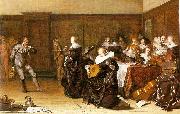 |
Pieter Codde -- Click Here
|
|
1599-1678
Dutch
Pieter Codde Locations
), was a Dutch painter of genre works and portraits, also known to be a poet. He is said to have studied with Frans Hals, but it is more likely that his training was with a portrait painter, Barent van Someren (1572 ?C 1632) or possibly with Cornelis van der Voort (1576 ?C 1624). His earliest work is known to be a piece from 1626, Portrait of a Young Man, now in the Ashmolean.
Most of his best remembered works were executed in Amsterdam and were small-scale paintings. They were distinctive in their silvery-gray tonalities, and many were musically themed, such as his first known genre work, Dancing Lesson (Louvre) from 1627, Musical Company of 1639, The Lute Player (Philadelphia Museum of Art) and, Concert, a piece now in the Uffizi Gallery. The other piece by Codde in the Uffizi is a genre work, Conversation. Codde also painted historical religious works, such as his Adoration of the Shepherds, from 1645, in the Rijksmuseum of Amsterdam.
Though it is unknown whether he studied with Frans Hals, his style is undoubtedly similar in some respects. He was commissioned in 1637 to complete an unfinished work of Hals, Officers of the Company of the Amsterdam Crossbow Civic Guard Under Captain Reynier Reael and Lieutenant Cornelis Michielsz Blaeuw. While the choice of Codde to complete this work by Hals was not an obvious selection at the time, Codde work in the portrait matched the original so well that it is uncertain who painted what, although the Rijksmuseum, which now houses the work, states that Codde??s style is recognizable smoother. |
|
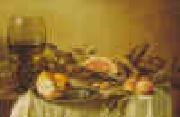 |
Pieter Claesz -- Click Here
|
|
Dutch 1597-1660 Pieter Claesz Locations
Dutch painter of German birth. He apparently spent his entire career in Haarlem, where he specialized in still-life paintings. Well over 100 works survive, dating from 1621 to 1660. Most of his pictures are dated and monogrammed PC. Since those initials were shared by the Antwerp still-life painter CLARA PEETERS, several attributions are disputed. |
|
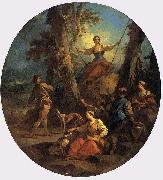 |
Pierre-Jacques Cazes -- Click Here
|
|
(1676-1754) was a French historical painter, known as the teacher of, among others, Chardin. In 1703, he became part of the Academie, was named as director in 1743 and chancellor in 1746. He also worked in the Galerie d'Apollon in the Louvre in 1727 and produced a large number of religious paintings for churches in Paris and Versailles. His historical painting is in the same academic tradition as the French painters Charles Le Brun and Charles de Lafosse. He also painted paintings with mythological motifs and genre scenes. A portrait the artist wearing a wig and holding a portfolio was presented to the Academie Royale in 1734 by Chardin's friend Joseph Aved.
|
|
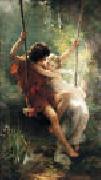 |
Pierre-Auguste Cot -- Click Here
|
|
French
1837-1883
Pierre-Auguste Cot Locations
He was born in B??darieux, and initially studied at l Ecole des Beaux-Arts in Toulouse before going to Paris. He studied under Leon Cogniet, Alexandre Cabanel and William-Adolphe Bouguereau. From the 1870s, his popularity grew quickly. In 1874 he was made Chevalier of the Legion of Honour. He created several works of lasting popularity, including Le Printemps, featuring two young lovers sitting upon a swing, and The Storm. Both these paintings were until recently on display at the Metropolitan Museum of Art in New York City; The Storm belongs to the museum while Le Printemps is owned privately.
Cot also was renowned for his portraits, which made up the majority of his work. The more enduring figurative work, such as The Storm, is comparatively rare. |
|
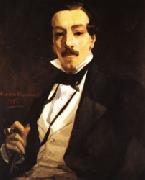 |
Pierre Puvis de Chavannes -- Click Here
|
|
1824-1898
French
Pierre Puvis de Chavannes Art Galleries
Born in Lyons on Dec. 14, 1824, Pierre Puvis de Chavannes belonged to the generation of Gustave Courbet and ??douard Manet, and he was fully aware of their revolutionary achievements. Nevertheless, he was drawn to a more traditional and conservative style. From his first involvement with art, which began after a trip to Italy and which interrupted his intention to follow the engineering profession that his father practiced, Puvis pursued his career within the scope of academic classicism and the Salon. Even in this chosen arena, however, he was rejected, particularly during the 1850s. But he gradually won acceptance. By the 1880s he was an established figure in the Salons, and by the 1890s he was their acknowledged master.
In both personal and artistic ways Puvis career was closely linked with the avant-grade. In the years of his growing public recognition, when he began to serve on Salon juries, he was consistently sympathetic to the work of younger, more radical artists. Later, as president of the Societe Nationale des Beaux-Arts - the new Salon, as it was called - he was able to exert even more of a liberalizing influence on the important annual exhibitions.
Puvis sympathy to new and radical artistic directions was reflected in his own painting. Superficially he was a classicist, but his personal interpretation of that style was unconventional. His subject matter - religious themes, allegories, mythologies, and historical events - was clearly in keeping with the academic tradition. But his style eclipsed his outdated subjects: he characteristically worked with broad, simple compositions, and he resisted the dry photographic realism which had begun to typify academic painting about the end of the century. In addition, the space and figures in his paintings inclined toward flatness, calling attention to the surface on which the images were depicted. These qualities gave his work a modern, abstract look and distinguished it from the sterile tradition to which it might otherwise have been linked.
Along with their modern, formal properties, Puvis paintings exhibited a serene and poetic range of feeling. His figures frequently seem to be wrapped in an aura of ritualistic mystery, as though they belong in a private world of dreams or visions. Yet these feelings invariably seem fresh and sincere. This combination of form and feeling deeply appealed to certain avant-garde artists of the 1880s and 1890s. Although Puvis claimed he was neither radical nor revolutionary, he was admired by the symbolist poets, writers, and painters - including Paul Gauguin and Maurice Denis - and he influenced the neoimpressionist painter Georges Seurat.
During his mature career Puvis executed many mural paintings. In Paris he did the Life of St. Genevieve (1874-1878) in the Panth??on and Science, Art, and Letters (1880s) in the Sorbonne. In Lyons he executed the Sacred Grove, the Antique Vision, and Christian Inspiration (1880s) in the Mus??e des Beaux-Arts. He painted Pastoral Poetry (1895-1898) in the Boston Public Library. These commissions reflect the high esteem with which Puvis was regarded during his own lifetime. Among his most celebrated oil paintings are Hope (1872) and the Poor Fisherman (1881). He died in Paris on Oct. 10, 1898. |
|
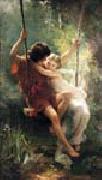 |
Pierre Auguste Cot -- Click Here
|
|
(February 17, 1837 ?C 1883) was a French painter of the Academic Classicism school.
He was born in B??darieux, and initially studied at l'Ecole des Beaux-Arts in Toulouse before going to Paris. He studied under Leon Cogniet, Alexandre Cabanel and William-Adolphe Bouguereau. From the 1870s, his popularity grew quickly. In 1874 he was made Chevalier of the Legion of Honour. He created several works of lasting popularity, including Le Printemps, featuring two young lovers sitting upon a swing, and The Storm. Both these paintings are on display at the Metropolitan Museum of Art in New York City; |
|
 |
Piero di Cosimo -- Click Here
|
|
1462-1521
Italian Piero di Cosimo Galleries
Italian painter and draughtsman.
Tax declarations made by Piero di Cosimo's father suggest that the artist was born in either 1461 or 1462. According to the first, he was eight years old in 1469, while a catasto (land registry declaration) of 1480 gives his age as 18. A document of 1457 establishes that his father, Lorenzo di Piero d'Antonio, was a maker of small tools (succhiellinaio) rather than a goldsmith, as Vasari claimed. By 1480 Piero appears no longer to have been living at the family house in the Via della Scala, Florence, but was an unsalaried apprentice or workshop assistant to Cosimo Rosselli, from whom he received room and board and eventually took the name of Piero di Cosimo. |
|
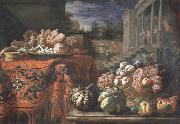 |
Pier Francesco Cittadini -- Click Here
|
|
Italian, 1616-1681,was an Italian painter of the Baroque period, active mainly in Bologna and painting lush and rich still lifes. Also known as Pier Francesco Cittadini. Originally trained in Rome then studied with Guido Reni. Also called il Milanese. He painted still life pictures. His two sons Giovanni Battista Cittadini and Carlo Cittadini were also still life painters. |
|
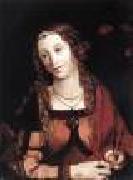 |
PIAZZA, Callisto -- Click Here
|
|
Italian painter, Lombard school (b. ca. 1500, Lodi, d. ca. 1561, Lodi)
Early collaborative projects with Martino and Albertino remain problematic. He probably moved to Brescia in 1523; the first major extant dated work is a Nativity (1524; Brescia, Pin. Civ. Tosio-Martinengo), painted for S Clemente, Brescia. In Brescia he studied the work of Moretto da Brescia and of Gerolamo Romanino, with whom he may have collaborated. Their influence is seen in the Visitation (1525; Brescia, S Maria Calchera) and especially in the group of works painted for churches in the Valcamonica. These include a Deposition (1527; Esine parish church); a Virgin Enthroned with Saints (Breno, S Antonio); a frescoed lunette of the Virgin Enthroned with Saints |
|
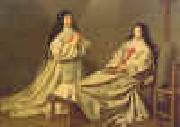 |
Philippe de Champaigne -- Click Here
|
|
1602-1674
Philippe de Champaigne Locations
His artistic style was varied: far from being limited to the realism traditionally associated with Flemish painters, it developed from late Mannerism to the powerful lyricism of the Baroque. It was influenced as much by Rubens as by Vouet, culminating in an aesthetic vision of the world and of humanity that was based on an analytic view of appearances and on psychological truth. He was perhaps the greatest portrait painter of 17th-century France. At the same time he was one of the principal instigators of the Classical tendency and a founder-member of the Acadmie Royale de Peinture et de Sculpture. His growing commitment to the Jansenist religious movement (see JANSENISM) and the severe plainness of the works that it inspired has led to his being sometimes considered to typify Jansenist thinking, with its iconoclastic impulse, in spite of the opposing evidence of his other paintings. He should be seen as an example of the successful integration of foreign elements into French culture and as the representative of the most intellectual current of French painting. |
|
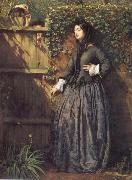 |
Philip Hermogenes Calderon -- Click Here
|
|
English genre, portraits, domestic and historical scenes Painter, 1833-1898
English painter of Spanish and French descent. His father, at one time a Roman Catholic priest, was Professor of Spanish Literature at King's College, London. Calderon studied at James M. Leigh's school in London in 1850, then in Paris at the studio of Fran?ois-Edouard Picot. He lived near by in Montmartre, sharing a room with fellow art student Henry Stacy Marks. He exhibited his first Royal Academy painting, By the Waters of Babylon (London, Tate), in 1853 and thereafter became a regular exhibitor until 1897. He first made his name with Broken Vows (London, Tate), exhibited in 1857. The painting shows a woman overhearing through a garden fence her lover betraying her and was painted in the detailed, clean-cut style associated with the Pre-Raphaelites. |
|
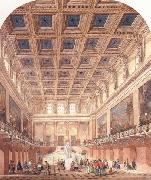 |
Philip Charles Hardwick -- Click Here
|
|
English architect , (1822-1892),
was a notable English architect of the 19th century who was once described as "a careful and industrious student of mediaeval art". He was born in Westminster and was the son of the architect Philip Hardwick (1792-1870), grandson of Thomas Hardwick (junior) (1752-1825) and great grandson of Thomas Hardwick Senior (1725-1825); the Hardwicks' architectural work spanned over 100 years, making them one of the most successful architectural families in British history. Hardwick's mother was also from an eminent architectural family: the Shaws. His maternal grandfather was John Shaw Senior (1776-1832) and his uncle was John Shaw Jr (1803-1870) - both architects known for their work at Christ's Hospital and at Ramsgate harbour. Philip Charles trained under his father and also in Edward Blore's office during which time he visited Belgium and Germany. Hardwick exhibited regularly at the Royal Academy between 1848 and 1854. Like his father, Philip Charles was employed in the 'Square Mile' of the City of London, where he became the leading architect of grandiose banking offices, mainly in an Italianate manner, setting the pattern for suburban and provincial designs for almost three decades. He designed five City banks, including Drummond's in Trafalgar Square (1879-81), and was architect to the Bank of England from 1855 to 1883. However, he was more employed outside London, designing branch offices at Hull (1856) and Leeds (1862-65). His best known work was the Great Hall of London's Euston railway station (opened on 27 May 1849). The Great Hall was demolished in 1962 to make way for construction of the current Euston Station building. Philip Charles was the last Hardwick Surveyor to St Bartholomew's Hospital in London and was a major benefactor of the hospital. |
|
 |
Petrus Christus -- Click Here
|
|
Flemish 1415-1473
Petrus Christus Locations
South Netherlandish painter.
His known artistic career began in Bruges on 6 July 1444 when, as the Poorterboek (citizens register) for that day reveals, he purchased his citizenship ... in order to be a painter. Town records show that he and his wife became members of the Confraternity of the Dry Tree c. 1462; that in 1463 he and another painter, Pieter Nachtegale, were paid for the construction of a Tree of Jesse (destr.) and for the cost of assistants employed on the day of the religious procession in which it was used; and that on 19 March 1472 he served as a representative of the painters guild in a dispute with another painter, Jehan de Hervy the elder ( fl 1472-1507). These and a few other scattered references comprise the existing documentation for Christusa life and work. |
|
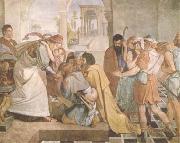 |
Peter von Cornelius -- Click Here
|
|
German Realist Painter, 1783-1867
German painter, draughtsman and teacher. He was a leading figure in the 19th-century revival of fresco painting for the decoration of public buildings. In both his own work and his teaching he was more concerned with conception and design than with the execution of the finished work. |
|
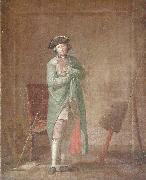 |
Peter Cramer -- Click Here
|
|
(1726 - 1782) was a self-taught artist who prepared the drawings for the illustration of Norden's 'Travels in Egypt,' and then became a decorative and theatrical painter. Together with this occupation he executed popular Danish scenes in the style of Teniers, and several of his pictures were engraved by Haas, Kleve, and Clemens. He died at Copenhagen in 1782.
|
|
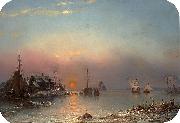 |
Per Wilhelm Cedergren -- Click Here
|
|
painted Winter picture from Dalaro Skans in 1856 |
|
 |
PEETERS, Clara -- Click Here
|
|
Flemish Baroque Era Painter, 1594-1657
|
|
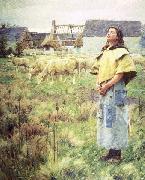 |
Pearce, Charles Sprague -- Click Here
|
|
American, 1851-1914
American artist, was born at Boston, Massachusetts. In 1873 Pearce became a pupil of L??on Bonnat in Paris, and after 1885 he lived in Paris and at Auvers-sur-Oise. He painted Egyptian and Algerian scenes, French peasants, and portraits, and also decorative work, notably for the Thomas Jefferson Building at the Library of Congress at Washington. He received medals at the Paris Salon and elsewhere, and was made Chevalier of the French Legion of Honor, decorated with the Order of Leopold, Belgium, the Order of the Red Eagle, Prussia, and the Order of the Dannebrog, Denmark. Among his best known paintings are The Decapitation of St John the Baptist (1881), in the Art Institute of Chicago; Prayer (1884), |
|
 |
Pavel Chistyakov -- Click Here
|
|
(July 5 [O.S. June 23] 1832 - November 11, 1919) was a Russian painter and teacher of art.
He studied at the St.Petersburg Academy of arts (1849-1861) under Petr Basin. He was a pensioner of the Academy of Arts in Paris and in Rome (1862?C1870). He taught in the Drawing School of the Society for the Encouragement of the Arts (1860-1864), and in St.Petersburg (from 1872) he was the professor-head of workshop (1908-1910) and managing mosaic branch (1890-1912). The art-pedagogical system of Chistiakov, whose students included Viktor Vasnetsov, Mikhail Vrubel, Vasily Polenov, Ilya Repin, Valentin Serov, and Vasily Surikov, developed in constant struggle against the inert system of academism and played a huge role in the development of realism in Russian art of the second half of the 19th century.
The main goal of Chistiakov was the preparation of the artist-citizen possessing high professional skill. His pedagogical method assumed the merger of the direct perception of nature by the artist with its scientific study. In creative practice he aspired to dramatization of a historical plot and psychological saturation in historical and genre portraits (Head of a Ciucciara, 1864, in the Russian Museum, |
|
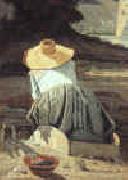 |
Paul-Camille Guigou -- Click Here
|
|
1834-1871
French
Paul Camille Guigou Gallery
French painter. Born into a family of landowners, he became a notary's clerk at Apt in 1851 and then in 1854 at Marseille. He learnt to paint with Camp, a teacher at the school in Apt, and then at Marseille with Emile Loubon (1809-63), director of the local Ecole des Beaux-Arts, who urged him (according to Guigou's biographers) to paint directly from nature. Guigou settled in Marseille in 1854, where he participated regularly in the annual Salon of the Societe Artistique des Bouches-du-Rhene. Guigou painted almost exclusively Proven?al landscapes, which were influenced by the works of the Barbizon painters, who exhibited in Marseille, and by the brownish tones and picturesque figures of Loubon's paintings. The Road to Gineste (1859) and The Washerwoman (1860; both Paris, Mus. d'Orsay) reflect the independent tradition of Proveneal painting during the Second Empire, which was characterized by warm colouring and precise lighting used to separate and distinguish forms. His knowledge of the works of Gustave Courbet, acquired during a visit to Paris in 1859, doubtless increased his liking for broad technique and sincere vision, articulated in a strong and ordered construction of space: for example, The Gorges of the Luberon (c. 1861; Amiens, Mus. Picardie). |
|
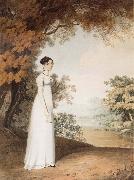 |
Paul Frederick De Caselli -- Click Here
|
|
Swiss, 1775-1817 |
|
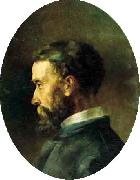 |
Paul Emile Chabas -- Click Here
|
|
(March 7,1869 ?C May 10,1937) was a French painter and illustrator and member of the Acad??mie des Beaux-Arts.
Paul Chabas's September Morn, 1912, oil on canvas, Metropolitan Museum of Art, New YorkHe was born in Nantes, and had his artistic training under William-Adolphe Bouguereau and Tony Robert-Fleury. He first exhibited at the Salon in 1890. He was awarded a gold medal at the Exposition Universelle of 1900 and in 1912 received the M??daille d??honneur. His preferred subject was a nude young girl in a natural setting. His most famous painting, September Morn (1912), became a "Succ??s de scandale" in the United States in May, 1913, when Anthony Comstock, head of the New York Society for the Suppression of Vice, protested against the painting as supposedly immoral. There was much publicity, and reproductions of the painting sold briskly for years afterwards. September Morn has often been cited as an example of kitsch. |
|
|
|
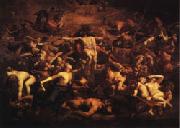 |
Paul Chenavard -- Click Here
|
|
Lyons 1807 - Paris 1895. |
|
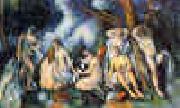 |
Paul Cezanne -- Click Here
|
|
French Post-Impressionist Painter, 1839-1906
During the second half of the 19th century French impressionism created a dramatic break with the art of the past. In conception and appearance the style was radically new and, although it initially inspired public ridicule, it soon affected nearly every ambitious artist in western Europe. The new vision emerged during the 1870s, chiefly in the art of Claude Monet, Auguste Renoir, and Camille Pissarro. For each of these artists impressionism was an illusionistic style which differed from the tradition of Renaissance illusionism in its greater emphasis upon vibrant, natural color and on an immediate confrontation with the phenomena of the visible world.
As the style developed during the 1880s, however, it increasingly became characterized by paintings which were flat rather than illusionistic. In other words, the impressionists insistence upon a direct application of pigment to canvas resulted in surfaces which declared themselves first of all as surfaces - and, consequently, in paintings which declared themselves first of all as paintings rather than as windows which looked out upon the natural world.
The tendency toward flatness persisted into the last years of the 19th century, its pervasiveness giving the impression that illusionistic space - fought for, won, and defended since the very beginning of the Renaissance - had finally been sacrificed by the medium of painting. Paul C??zanne worked within and finally emerged from this trend. As a painter, he matured slowly, his greatest works coming during the last 25 years of his life. During this period he scored a remarkable and heroic achievement: he restored to painting the space and volume that had seemingly been lost to it. But he did it in a totally unprecedented way: not by return to the illusionism of the past but by the creation of a spatial illusionism that did not violate flatness.
C??zanne was born on Jan. 19, 1839, in Aix-en-Provence. His father, Philippe Auguste, was the cofounder of a banking firm which prospered throughout the artist life, affording him financial security that was unavailable to most of his contemporaries and eventually resulting in a large inheritance. In 1852 C??zanne entered the Coll??ge Bourbon, where he met and became friends with Émile Zola. This friendship was decisive for both men: with youthful romanticism they envisioned successful careers in the Paris art world, C??zanne as a painter and Zola as a writer. Consequently, C??zanne began to study painting and drawing at the École des Beaux-Arts in Aix in 1856. His father opposed the pursuit of an artistic career, and in 1858 he persuaded C??zanne to enter law school at the University of Aix. Although C??zanne continued his law studies for several years, he was simultaneously enrolled in the School of Design in Aix, where he remained until 1861.
In 1861 C??zanne finally convinced his father to allow him to go to Paris. He planned to join Zola there and to enroll in the École des Beaux-Arts. But his application was rejected and, although he had gained inspiration from visits to the Louvre, particularly from the study of Diego Vel??zquez and Caravaggio, C??zanne experienced self-doubt and returned to Aix within the year. He entered his father banking house but continued to study at the School of Design.
The remainder of the decade was a period of flux and uncertainty for C??zanne. His attempt to work in his father business was abortive, and he returned to Paris in 1862 and stayed for a year and a half. During this period he met Monet and Pissarro and became acquainted with the revolutionary work of Gustave Courbet and Édouard Manet. C??zanne also admired the fiery romanticism of Eug??ne Delacroix paintings. But he was never entirely comfortable with Parisian life and periodically returned to Aix, where he could work in relative isolation. He retreated there, for instance, during the Franco-Prussian War (1870-1871). |
|
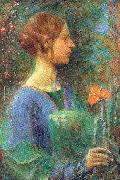 |
Parrish, Clara Weaver -- Click Here
|
|
American, 1861-1925 |
|
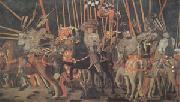 |
Paolo di Dono called Uccello -- Click Here
|
|
Florence 1397-1475 |
|
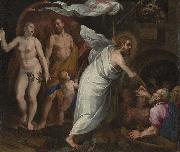 |
Pablo de Cespedes -- Click Here
|
|
(1538 - July 26, 1608) was a Spanish painter, poet, and architect.
His father, Alonso Cespedes, was descended of a noble Castilian family, once settled at Ocaña, and the name of his mother, who was a native of Alcolea de Torote, was Olaya de Arroya. Pablo was born and brought up in the house of his father's maternal uncle, Francisco Lopez de Aponte, Canon of Cordoba, where he received a learned education. At the age of eighteen, in 1556, he was sent to the Universidad Complutense in Alcale de Henares, and there, devoted himself to the acquirement of Oriental languages and theology. He later moved to Rome where he studied painting under Federico Zuccari.
He was in Rome in February 1559, engaged in conducting certain negotiations for the Archbishop Carranza de Miranda, of Toledo, who then stood charged with heresy before the Inquisition of Valladolid. On the 17th of that month he addressed a letter to the prelate, informing him how his business stood at the Vatican, in which he incautiously reflected on the conduct of the Inquisitor-General Valdez, and the Holy Officeean offence which no Inquisitor-General would forgive. This document and others were seized with the primate's papers; he was therefore denounced by the tribunal, and but for his fortunate absence, would have been imprisoned. It is probable that he did not venture back into Spain for many years, until he had covered his sins with the protecting robes of the Church.
He remained in Italy for over 20 years and built a reputation as an artist. His only surviving works from that period are the frescoes he painted in the Bonfili chapel at the Santa Trinite dei Monti church in Rome.
He returned to Spain in 1577, and was appointed as the canon of the Cerdoba cathedral. He continued to write books on antiquarian topics such as the architecture of the temple of Solomon. He befriended Arias Montano. In 1604 he composed his Discourse of Ancient and Modern Painting and Sculpture in which he recounts anecdotes of Renaissance masters of Italy.
|
|
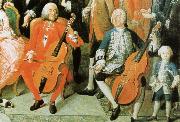 |
pablo casals -- Click Here
|
|
Catalan cellist and composer. He studied at Barcelona from 1887 and made his d??but there in 1891. After further study in Madrid and Brussels his international career began in 1899, when he played Lalos Concerto under Lamoureux in Paris. In 1905 he formed a trio with Thibaud and Cortot, recording works by Schubert and Beethoven. As a soloist Casals was renowned for his beautiful tone and intellectual strength. His playing did much to bring Bach's suites into the repertory. He formed the Orquestra Pau Casals in Barcelona in 1919 but his activities were curtailed by the Spanish Civil War. In 1950 at Prades he returned to music-making and later directed festivals at Perpignan and Puerto Rico. His many pupils included Guilhermina Suggia, with whom he formed a liaison. Casals wrote instrumental works and many choral pieces of a simple, devotional nature. |
|
 |
P.C. Skovgaard -- Click Here
|
|
(known as P.C. Skovgaard), (4 April 1817 - 13 April 1875), Danish national romantic landscape painter, was born near Ringsted to farmer Tham Masmann Skovgaard and his wife Cathrine Elisabeth. He is one of the main figures associated with the Golden Age of Danish Painting. He is especially known for his large scale portrayals of the Danish landscape.
The family had to leave the farm when he was six years old. They moved to Vejby in north Sjælland where his father earned his living as a grocer. Already as a young child he impressed his family with his artistic abilities. His mother, who had studied art under flower painter Claudius Ditlev Fritsch, gave him instructions in drawing until he was confirmed and could be sent to Copenhagen for training at the Royal Danish Academy of Art (Det Kongelige Danske Kunstakademi).
|
|
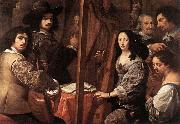 |
NUVOLONE, Carlo Francesco -- Click Here
|
|
Italian painter, Lombard school (b. 1608, Cremona, d. ca. 1665, Milano) |
|
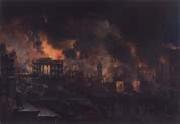 |
Nicolino V. Calyo -- Click Here
|
|
American, 1799-1884 |
|
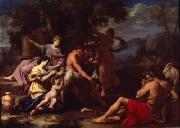 |
Nicolas Chaperon -- Click Here
|
|
Nicolas Chaperon (Châteaudun, bapt. 19 October 1612 e Lyon 1656) was a French painter, draughtsman and engraver, a student in Paris of Simon Vouet whose style he adopted before he was further matured by his stay in Rome (1642-51) in the studio of Nicolas Poussin.
In 1653-55 the consuls de Lyon called him to decorate the hôtel de ville but Chaperon dying almost as soon as he arrived, the commission passed to Thomas Blanchet. Chaperon made a name for himself with his suite of engravings after the Raphael Loggie of the Vatican, Rome, 1649, but art historians remember him for the stream of fulminating invective with which Poussin in his correspondence with Paul Freart de Chantelou described this unruly and vindictive practician who refused to carry through his copy of a Transfiguration. So little is known of Chaperon that this episode stands out. |
|
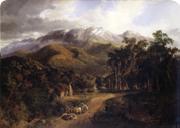 |
Nicholas Chevalier -- Click Here
|
|
Russia landscape artists and cartoonist .
1828-1902
was an Australian artist. Chevalier was born in St Petersburg, Russia, the son of Louis Chevalier, who came from Vaud, Switzerland, and was overseer to the estates of the Prince de Wittgenstein in Russia. Nicholas' mother was Russian. Nicholas left Russia with his father in 1845, and studied painting and architecture in Lausanne, Switzerland and at Munich. In 1851 Chevalier moved to London and worked as an illustrator in lithography and water-colour. He also designed a fountain which was erected in the royal grounds at Osborne, and two of his paintings were hung at the Academy in 1852. Further study in painting followed at Rome. About the end of 1854 Chevalier sailed from London to Australia to join his father and brother, and in August 1855 obtained work as a cartoonist on the newly established Melbourne Punch. Later he did illustrative work for the Illustrated Australian News and also worked in chromo-lithography. In 1864, when the National Gallery of Victoria was founded, an exhibition of pictures by Victorian artists was held, the government underook to buy the best picture exhibited for £200. Chevalier's oil painting "The Buffalo Ranges" was selected, and was the first picture painted in Australia to be included in the Melbourne collection. In 1867 Chevalier visited New Zealand, travelling widely and doing much work there which was exhibited at Melbourne on his return. In 1869 he joined the H.M.S. Galatea as an artist with the Duke of Edinburgh, on the voyage to the East and back to London with stops in Tahiti, Hawaii, Japan, China, Ceylon (Sri Lanka) and India. The pictures painted during the voyage were exhibited at South Kensington. In January 1874 Chevalier was commissioned by Queen Victoria to travel to St Petersburg and paint a picture of the marriage of the Duke of Edinburgh. Chevalier made London his headquarters and was a constant exhibitor at the Academy from 1871 to 1887. |
|
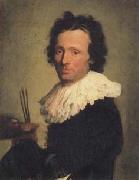 |
Niccolo Cassana -- Click Here
|
|
Italian , 1659 - 1714
was an Italian painter born in Venice and active during the late-Baroque. He trained with his father, Giovanni Francesco Cassana, a Genoese painter, who had been taught the art of painting by Bernardo Strozzi. He painted a "Conspiracy of Catiline" for the Gallery at Florence. Having painted portraits of the Florentine court, and also of some of the English nobility, Nicoletto was invited to England, and introduced to Queen Anne, who sat to him for her likeness, and conferred on him many marks of favour. He died in London in 1714 |
|
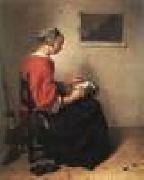 |
NETSCHER, Caspar -- Click Here
|
|
Dutch Baroque Era Painter, ca.1635-1684 |
|
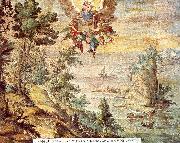 |
Nebbia, Cesare -- Click Here
|
|
Italian, 1536-1614
Italian painter and draughtsman. He was a pupil of GIROLAMO MUZIANO and much influenced by Federico Zuccaro, and Vasari cited him as a promising painter. Between 1562 and 1575 Nebbia was continuously employed in Orvieto, producing altarpieces and frescoes in the cathedral, for example the Marriage at Cana (1569), the Crucifixion (1574) and the Crowning with Thorns (1575; all Orvieto, Mus. Opera Duomo). In Rome, where from 1579 his name appeared in the register of the Accademia di S Luca, he executed an Ecce homo and another Crowning with Thorns (1576; oratory of the Gonfalone), a Noli me tangere (1579; S Maria degli Angeli), decorations in the Sforza Chapel, S Maria Maggiore (1582), Heraclius Taking the Cross (1582-4; Santissimo Crocifisso), the Martyrdom of St Lawrence (1589; S Susanna) and decorations in the Borghese Chapel, Trinit? dei Monti (c. 1590). Under Pope Sixtus V he was responsible, with Giovanni Guerra, for the decorations in the Sistine Library, and he also worked on the Scala Santa, in the Vatican Palace and in the Lateran Palace. In 1597 he was principal of the Accademia di S Luca. Two years later he received payment for the cartoons of St Matthew and St Mark for the mosaics in the cupola of St Peter's. The following year he painted the Dream of Constantine (S Giovanni in Laterano). In 1603-4 he decorated, with Zuccaro, the hall in the Collegio Borromeo, Pavia. He retired to Orvieto in 1609. |
|
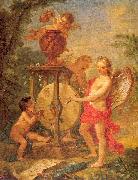 |
Natoire, Charles Joseph -- Click Here
|
|
French, 1700-77
French painter, draughtsman and teacher, active also in Italy. An exact contemporary of Fran?ois Boucher, he was a painter of cabinet pictures, decorations and tapestry cartoons and one of the most adept practitioners of Rococo art in 18th-century France. The greater part of his career was spent in Paris, where he received important commissions from Louis XV as well as from private patrons. In 1751 he accepted the post of Director of the Acad?mie de France in Rome. |
|
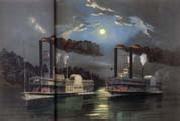 |
Nathaniel Currier -- Click Here
|
|
American lithographer and print publishers , 1813-1888
was an American lithographer, who headed the company Currier & Ives with James Ives. Currier was born in Roxbury, Massachusetts to Nathaniel and Hannah Currier. He attended public school until age fifteen, when he was apprenticed to the Boston printing firm of William and John Pendleton. The Pendletons were the first successful lithographers in the United States, lithography having only recently been invented in Europe, and Currier learned the process in their shop. He subsequently went to work for M. E. D. Brown in Philadelphia, in 1833. The following year, Currier moved to New York City, where he was to start a new business with John Pendleton. Pendleton backed out, and the new firm became Currier & Stodart, which lasted only one year. In addition to being a lithographer, he was also a volunteer fireman in the 1850s. In 1835, Currier started his own lithographic business as an eponymous sole proprietorship. He initially engaged in standard lithographic business of printing sheet music, letterheads, handbills, etc. However, he soon took his work in a new direction, creating pictures of current events. In late 1835, he issued a print illustrating a recent fire in New York. Ruins of the Merchant's Exchange N.Y. after the Destructive Conflagration of Decbr 16 & 17, 1835 was published by the New York Sun, just four days after the fire, and was an early example of illustrated news. |
|
 |
Nardo di Cione -- Click Here
|
|
Italian Byzantine Style Painter, active 1343-ca.1365
was an Italian painter, sculptor and architect from Florence. He was the brother of the more accomplished Andrea di Cione, called Orcagna, as well as Jacopo di Cione; they were important members of the Painter's Guild of Florence. While Orcagna has been noted as the more accomplished artist, Nardo developed his own unique style, described as a pronounced lyrical vein, a feeling for poetic values, strong human sympathies and great sensitivity to colour as a means of subtle differentiation and soft modeling. The brothers collaborated on a number of works from their studio together, including the decorations from the Cappella Strozzi in the Santa Maria Novella. While Orcagna painted the altarpiece, Nardo executed the frescoes of The Last Judgment, Paradise and Hell. |
|
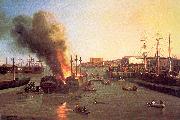 |
Nahl, Charles Christian -- Click Here
|
|
German-born American Painter, 1818-1878
later known as Charles Nahl, Karl Nahl, Charles Christian Nahl or Charles C. Nahl, was a German-born painter who is called California's first significant artist.He came from a long line of artists and sculptors and was trained at the Cassel Academy. Unease over the political state of Hesse led him and his friend Frederick August Wenderoth (1819-1884) to Paris in 1846, where "Charles" enjoyed some success at the salon. The February Revolution prompted another move with his half-brother Hugo Wilhelm Arthur Nahl (1833-1889) to Brooklyn, New York, where they heard of the gold strike. They had no luck along the Yuba River but opened a studio with Wenderoth in Sacramento |
|
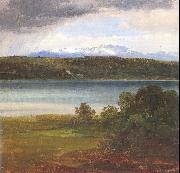 |
Morgenstern, Christian -- Click Here
|
|
German, 1805-1867
German painter. After training from 1824 with Siegfried Bendixen (1786-1864) in Hamburg, he studied at the Kunstakademi in Copenhagen in 1827 and made sketching trips to Sweden and Norway. He then settled permanently in Munich. He was influenced in particular by 17th-century Dutch painters, notably Jacob van Ruisdael, the Copenhagen plein-air painters, the emerging Norwegian landscape school and the early Realist painters working in Munich, such as Johann Georg von Dillis. Morgenstern explored objective, pure landscape painting with intimate motifs in such works as Beech-tree Trunks in Fredericksdal near Copenhagen (1828; Hamburg, Ksthalle). He also painted scenes combining closely rendered foreground details with extensive, |
|
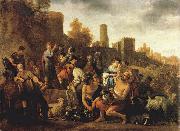 |
MOEYAERT, Claes Cornelisz. -- Click Here
|
|
Dutch painter (b. 1590/91, Durgerdam, d. 1655, Durgerdam)
Dutch painter, etcher and draughtsman. He was the son of an aristocratic Catholic Amsterdam merchant and moved to the city with his family in 1605. He was the most prolific of the history painters now called the PRE-REMBRANDTISTS, whose representations of biblical and mythological narratives, as well as of more recent secular history, give particular emphasis to dramatic and psychological effects. After working initially as a draughtsman and etcher, Moeyaert soon made his name as a painter. Landscapes with animals feature prominently in both his etchings and his paintings. At first he followed the lead of Adam Elsheimer, then of fellow Pre-Rembrandtists Pieter Lastman and Jan and Jacob Pynas, eventually, in the mid-1630s, |
|
|
|
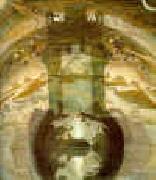 |
Mikolajus Ciurlionis -- Click Here
|
|
1875-1911 Lithuanian
Mikolajus Ciurlionis Locations
Lithuanian painter and composer. He studied with Noskowski in Warsaw and with Jadassohn and Reinecke at the Leipzig Conservatory (1901). His music makes use of invented modes, colourful harmony and autonomous rhythms; he wrote much for the piano as well as orchestral and chamber music. He was also famous as a painter. |
|
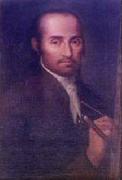 |
Miguel Cabrera -- Click Here
|
|
(1695-1768) was an indigenous Zapotec painter during the Viceroyalty of New Spain, today's Mexico. During his lifetime, he was recognized as the greatest painter in all of New Spain.
He was born in Antequera, today's Oaxaca, Oaxaca, and moved to Mexico City in 1719. He may have studied under the Rodreguez Juerez brothers or Jose de Ibarra.
Cabrera was a favorite painter of the Archbishop and of the Jesuit order, which earned him many commissions. His work was influenced by Bartolome Esteban Murillo and the French painting of his time.
While Miguel is most famous for his Casta paintings and his portrait of the poet Sor Juana, he also executed one of the first portraits of St. Juan Diego. In 1752 he was permitted access to the icon of Our Lady of Guadalupe to make three copies: one for Archbishop Jose Manuel Rubio y Salinas, one for the Pope, and a third to use as a model for further copies. In 1756 he created an important early study of the icon of Our Lady of Guadalupe, Maravilla americana y conjunto de raras maravillas observadas con la direccien de las reglas del arte de la pintura
The essential purpose of Maravilla Americana was to affirm the 1666 opinions of the witnesses who swore that the image of the Virgin was of a miraculous nature. However, he also elaborated a novel opinion: the image was crafted with a unique variety of techniques. He contended that the Virgin's face and hands were painted in oil paint, while her tunic, mandorla, and the cherub at her feet were all painted in egg tempera. Finally, her mantle was executed in gouache. He observed that the golden rays emanating from the Virgin seemed to be of dust that was woven into the very fabric of the canvas, which he asserted was of "a coarse weave of certain threads which we vulgarly call pita," a cloth woven from palm fibers.
In 1753, he founded the second Academy of Painting in Mexico City and served as its director.
|
|
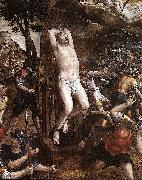 |
Michiel Coxie -- Click Here
|
|
Coxie also spelled Coxcie or Coxien, Latinised name Coxius (1499 - 3 March 1592) was a Flemish painter who studied under Bernard van Orley, who probably induced him to visit the Italian peninsula.
Coxie was born in 1499 in Mechelen in what was then the Duchy of Brabant. At Rome in 1532 he painted the chapel of Cardinal Enckenvoirt in the church of Santa Maria dell'Anima; and Giorgio Vasari, who knew him, says with truth that he fairly acquired the manner of an Italian. But Coxie's principal occupation was designing for engravers; and the fable of Psyche in thirty-two sheets by Agostino Veneziano and the Master of the Die are favorable specimens of his skill.
Returning to the Netherlands, Coxie greatly extended his practice in this branch of art. But his productions were till lately concealed under an interlaced monogram M.C.O.K.X.I.N. In 1539, Coxie returned to Mechelen, where he matriculated and painted the wings of an altarpiece for the chapel of the guild of St Luke. The centre of this altar-piece, by Jan Mabuse, represents Saint Luke the Evangelist, patron of painters, portraying the Virgin; the side pieces contain the Martyrdom of Saint Vitus and the Vision of St John the Evangelist in Patmos.
At van Orley's death in 1541 Coxie succeeded to the office of court painter to the Regent Maria of Austria, for whom he decorated the castle of Binche. He was subsequently patronized by Charles V, Holy Roman Emperor, who often coupled his works with those of Titian; by Philip II of Spain, who paid him royally for a copy of Jan van Eyck's Agnus Dei, and also commissioned two copies of Van der Weyden's Descent from the Cross from Coxie; and by Fernando Álvarez de Toledo, Duke of Alva, who once protected him from the insults of Spanish soldiery at Mechelen. At that time, Coxie also designed tapestries for the Brussels manufacturers. |
|
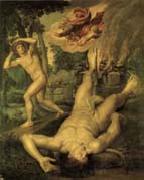 |
Michiel Cocxie -- Click Here
|
|
Flemish Raphael , b. Mechlin, 1499- d. 1592 |
|
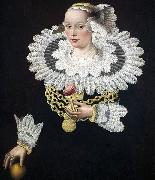 |
Michael Conrad Hirt -- Click Here
|
|
painted Portrait of Anna Rosina Tanck, wife of the mayor of Lubecker in1642 |
|
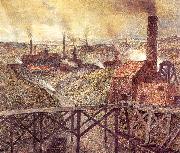 |
Meunier, Constantin -- Click Here
|
|
Belgian Painter and Sculptor, 1831-1905
Belgian sculptor, painter and draughtsman. He was directed towards an artistic career by his elder brother, the engraver Jean-Baptiste Meunier (1821-1900). He entered the Acad?mie des Beaux-Arts, Brussels, in September 1845 and studied under the sculptor Louis Jehotte (1804-84) from 1848. In addition, in 1852 he attended the private studio of the sculptor Charles-Auguste Fraikin. Gradually he came to feel that sculpture, at least in the traditional form taught in Brussels, was incapable of providing an adequate vehicle for either exposition or expression. Still at the Academy, he transferred to painting, therefore, in 1853, and followed the courses given by Fran?ois-Joseph Navez, studying in the evenings at the Saint-Luc studio, with Charles De Groux. He became friends with Louis Dubois, F?licien Rops and other rebellious young artists who were to found the Soci?t? Libre des Beaux-Arts in Brussels in 1868. With these, Meunier was part of the realist avant-garde, while seeking out a path of his own in painting. It has been said that De Groux had a decisive influence on Meunier. The latter partly denied this and insisted that he had felt the need very early to practise an art that was more devoted to the masses, to the people. His interest in everyday life, in the experience and condition of man, can already be discerned in the sketches and studies he made during his stays in the Trappist monastery of Westmalle, near Antwerp, between 1857 and 1875. |
|
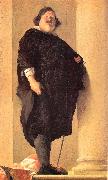 |
Mellin, Charles -- Click Here
|
|
French Baroque Era Painter, 1597-1649 |
|
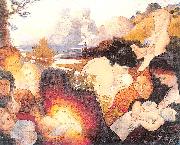 |
Maurin, Charles -- Click Here
|
|
French, 1856-1914
was a French painter who practised a variety of styles. A notable symbolist work of his being Maternity, a study of motherhood. He was a friend of the painter Felix Vallotton. |
|
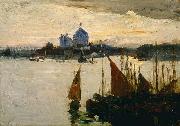 |
Maurice Galbraith Cullen -- Click Here
|
|
Maurice Galbraith Cullen (1866-1934) was a Canadian artist.
Cullen was born June 6, 1866 in St. John's, Newfoundland.
Beginning in January 1918, Cullen served with Canadian forces in the First World War. He came to the attention of Lord Beaverbrook, who arranged for him to be commissioned as an "official war artist" along with Frederick Varley, J.W. Beatty and C. W. Simpson. |
|
|
|
|
|
|
| | |
|
|
|
|